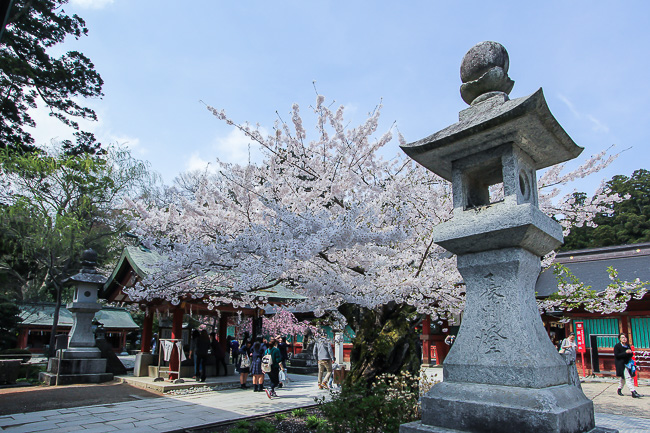Sendai Cherry Blossom Report
by Raina, staff writer of japan-guide.com
| previous post |
| next post |
2015/04/16 - Sendai Cherry Blossom Report

While Scott was in the Fujigoko region today and you can read his report here, I headed north to the Tohoku Region and checked out the cherry blossoms in Miyagi and Iwate prefectures. The cherry blossom season has ended in Tokyo and Kyoto, and the Tohoku Region is the place to go if you want to see cherry blossoms in the coming week.
Yamagata and Akita cities both reached full bloom (mankai) on April 15, while Morioka reached full bloom today (April 16). I expect this weekend to be perfect for cherry blossom viewing (hanami) in these places if you are in the area.
Shiroishi Riverside
April 16, 2015 - petals falling
I started my day at the Shiroishi Riverside, an eight kilometer long stretch of the Shiroishi River lined on both embankments by nearly 1200 cherry trees about 30 minutes south of Sendai by train. The train from Funaoka Station to Ogawara Station also runs along part of this cherry tree lined area and it was beautiful to see from the train as well. I covered the section of the riverside between Funaoka and Ogawara stations, and the cherry trees had petals falling when I was at the riverside today, but still looked full and very attractive. I expect the trees here to remain attractive till at least this weekend.
From Ogawara Station, it is about a three minute walk to the riverside. There is a sakura festival on this end of the riverside until April 23, and the cherry trees around the area are lit up from 18:00 to 22:00. Additionally, sightseeing boats ply the riverside from 10:00 to 16:00, allowing visitors to see the cherry trees from the water. One trip takes about 30 minutes and costs 1000 yen.
I saw cherry tree after cherry tree as I walked towards the next station, Funaoka Station. It was gorgeous to see as the rows of trees created a cherry blossom tunnel of sorts. There were also groups of morning walkers and tourists enjoying the morning blossoms and relatively sunny weather in the morning. While visitors can also walk along the riverbanks, they were a little muddy from rain and I found my shoes to be covered in a mix of mud and fallen petals. However, there is a paved walkway beside the riverbank that makes for a more comfortable walk and to which I switched to halfway through.






Tsutsujigaoka Park
April 16, 2015 - petals starting to fall (Somei Yoshino)
April 16, 2015 - full bloom (weeping cherries)
My next stop for today was Tsutsujigaoka Park, one stop east of Sendai Station. The western end of the park has a variety of cherry trees planted on the grounds, and thanks to the good weather, the park was crowded with hanami-goers picnicking on blue sheets under the cherry trees. There were also festival food stalls lined up on the one side that were popular with the vistors.
While the Somei Yoshino, the most numerous and commonly seen cherry tree, had petals falling, the weeping cherries were at full bloom and are expected to remain attractive for the next few days. I expect the park to be crowded this weekend with lots of hanami revelers taking advantage of the warm and mostly weather.









Shiogama Shrine
April 16, 2015 - full bloom (Somei Yoshino)
April 16, 2015 - full bloom (weeping cherries)
April 16, 2015 - still closed (late blooming varieties)
My last stop for the day was Shiogama Shrine, a large Shinto shrine about ten minutes on foot from Hon-Shiogama Station. It is believed to be about 1200 years old and has over 300 cherry trees of around 30 different varieties.
Most of the cherry trees were at full bloom when I was there except for the late blooming varities, including the Shiogama Cherry, a cherry variety unique to the shrine, that were still in their buds. I expect the blossoms at full bloom to remain beautiful for at least the next few days before their petals start to fall and the flowers in buds to develop more over the coming week.
Due to the many varieties of cherry trees present at the shrine, the cherry blossom blooming season is prolonged and flowers can be seen over a longer period of time. I saw groups of visitors picnicking in the small garden at the front of the shrine, and later, a large high school group on excursion to the shrine. All these visitors made the shrine bustle with energy and movement that made it a different shrine experience for me.








| previous post |
| next post |


